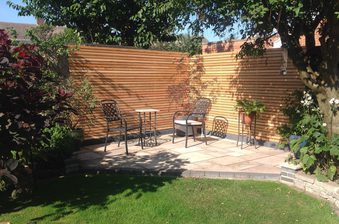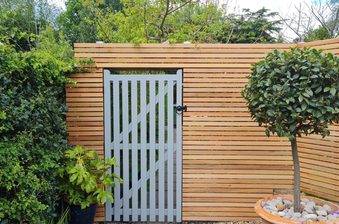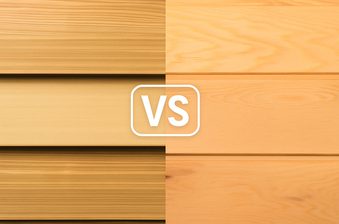Living in a rather windy area or exposed area? Choosing a fencing style that’s designed to withstand the elements can save you money and hassle. Not only that, but when done stylishly, it can add value to your property.
Living on the coast, near an exposed area or in the countryside means your house will naturally be prone to high winds. A sturdy boundary is key.
You might even be here as it’s coming round to repairing a fence that’s borne the brunt of the winter we’ve just had.
By investing in a stylish wind-proof fencing solution, not only will you have a garden border that’s the envy of your neighbours, but you’ll be saving yourself a spot of money, some repair work and a headache further down the line…
Durable & wind-resistant fencing designs & examples
Future-proof your property’s boundary against the brutality of the British elements with some of these stylish fence styles and examples.
1. Slatted fencing — for a design-led, wind-resistant solution
To combine contemporary style with top-tier durability and wind resistance, you might want to explore slatted fencing, also often known as Venetian fencing.
The gaps in between the slats easily permit wind to pass through, essentially eliminating any stress on the posts and panels. And let’s be honest, considering the winter we’ve had, that can’t be a bad thing.
Not only is it functional, but it’s also on-trend. The 10mm gap between the pieces still provides ample privacy whilst creating a neat, contemporary ‘shadow gap’ effect which changes with the sun during the day, cascading across your lawn.
Another benefit is that there’s no ‘bad side’ — a definite problem with traditional overlap types of fencing! Your garden plants will also thank you enormously; it can help to avoid them having to sit in shade during certain times of the day.



Of course, one commonly-touted downside to slatted fencing is a lack of privacy. However, you might be surprised at the visual segregation these panels can provide in practice. For maximum privacy, panels with larger slats can be chosen; our 18x70mm style will keep out more light than our 18x45mm option.
As well as the design, what’s key is to ensure your slatted fencing is machined from a premium timber species. Not only will it look the part, but it’ll be far more resistant to decay and damage, ensuring it lasts as long as possible — certainly longer than the treated softwoods you find in many UK home improvement stores.
Depending on your desired look, you might want to choose Western Red Cedar for its eternally-popular reddish-brown hues and remarkable outdoor durability. You might also like to explore Iroko, an exotic yellow-brown African hardwood that, over time, darkens to a gorgeous dark brown or bronze. Similarly, it’s a top-performer when it comes to standing up to the elements.
The most popular orientation for designer slatted fencing is horizontal. For smaller outdoor spaces, such as miniature or city-centre gardens, this style can even add the illusion of size, but vertical slatted fencing is equally dynamic and versatile.
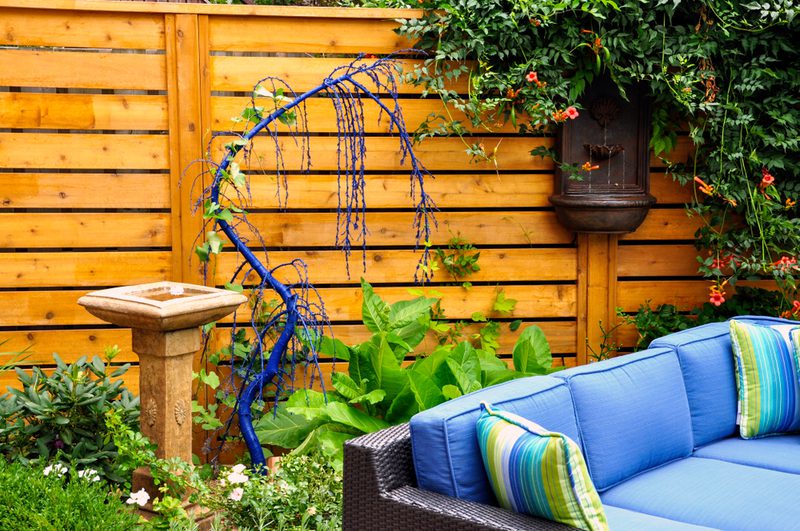
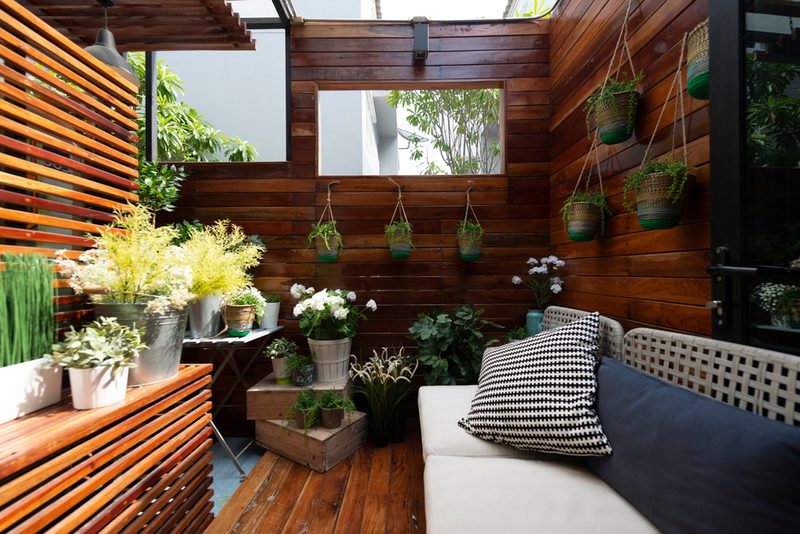

Another functional, stylistic benefit of slatted fencing, apart from its weather resistance — it doesn’t have to be limited to the boundaries of your property. A particularly on-trend application is as a zoning tool; for creating themes and spaces in an outdoor area. You might want to use slatted fencing to draw attention to and designate a leisure space, for example.
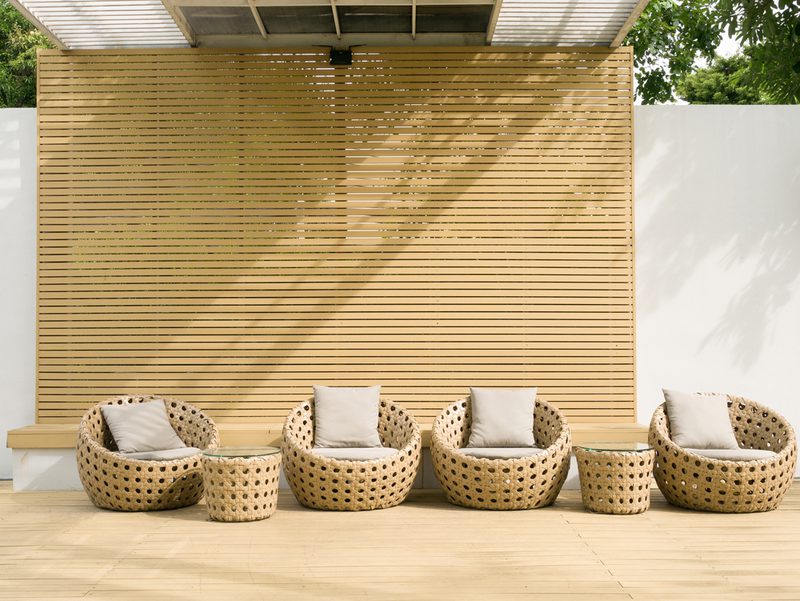
For more inspiration and design ideas, be sure to explore our slatted fencing guide.
2. ‘Hit-and-miss’ fencing — for greater privacy
If slatted fencing fails to provide the privacy you desire, another storm-proof solution might be ‘hit-and-miss’ — sometimes known as ventilation fencing. This is probably the best privacy fence for windy areas.
The fencing slats are fixed alternatively on the front and back of a rail, providing greater privacy whilst relieving the panel of some of the wind’s force. Although this style provides slightly less resistance than slatted fencing, it is still a very functional solution — certainly much more so than close board styles.

Like slatted fencing, this is bound to go down well with your neighbour; you both get the ‘good side’! Hit and miss fencing can be done horizontally or vertically and offers a rather continental, distinguished look. You might want to complete your fence with a trellis panel at the top, adding to its style.
Again, the design is only really half the battle — choosing a naturally durable timber species will drastically maximise the time your fence stays standing, and how long it looks good for.
Unlike with slatted fencing, however, you’ll miss out on the stylish, on-trend ‘shadow gap’ effect, and your garden plants will have to go without some much-needed light…
3. Concrete posts — for a stable, sturdy fence
One major cause of any fencing repair work? Rotten wooden fence posts. Slightly too much wind against the panels they’re holding in place, and snap.
One solution, therefore? Concrete. It’s an extremely durable material that isn’t subject to insect attack or decay; it can bear the brunt of high-speed winds in an exposed area and come off looking the same.
Once the concrete foundations are in place, you can just slot in a fence panel of your desired style. This, of course, comes with a downside — the panels can be stolen fairly easily!
Whilst it can look very smart, it’s not such an easy job to install the posts; you might need a team so the job can be done professionally. Concrete can also be quite a bit pricier than timber posts — perhaps even prohibitively expensive, depending on your project budget.

Persistent high winds can also cause the panels to rattle in the post slots, which can be quite an annoying noise, but can also even damage the integrity of the posts (as can freezing water that finds its way in). Then there’s the sustainability side of things — concrete is incredibly energy intensive to create and transport.
The manufacture of concrete is responsible for 5% of the world’s carbon dioxide emissions. If you’re looking to create the ultimate eco-friendly outdoor space and weave a sustainable story into your design, then concrete posts might be something to avoid.
But, that said, it’s hard to deny that when incorporated sympathetically and installed properly, concrete posts a smart, durable and storm-proofed solution.
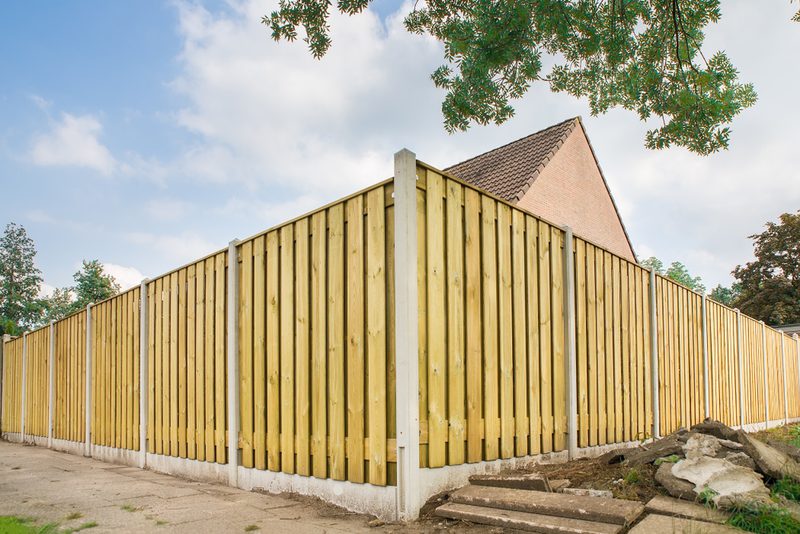
Starting a fencing project?
We’re your people! At Duffield Timber, we stock slatted screen fencing in a range of gorgeous, dynamic and stylish timber species.
Explore our slatted fencing, or click the button below to get in touch with our team straight away to begin your project!
For more top tips for a tip top outdoor space, be sure to check out our slatted fencing ideas guide, our garden design trends blog as well as the fencing section of our project hub.
